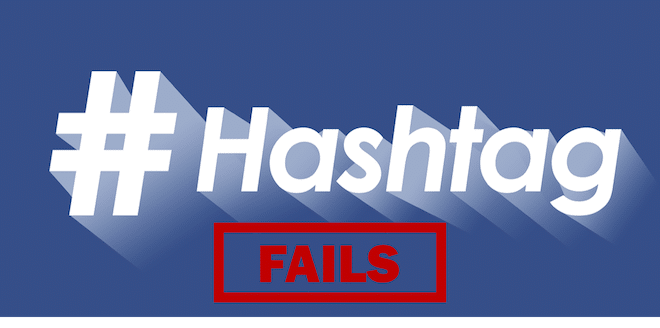At Voxus, we handle all kinds of projects for our clients’ social media accounts and are often asked to help plan and launch social media campaigns. One of the most important elements of a social media campaign? The hashtag. But how do you pick the right one? Can you pick a wrong hashtag? Luckily, there’s an answer to both of these questions. Follow these tips and you’ll avoid being on the top of the hashtag fails list for 2017.
How to pick the right hashtag
Know your audience
Making sure you know your audience is a critical first step. What resounds with them, what interests them, and what could potentially offend them? These are all questions you need to answer before you start your hashtag exploration.
Make it relevant to your brand and your industry
Some large brands might be able to get away with using a hashtag that doesn’t mention their name or their products, but for the average brand it’s not always helpful. And in some cases it may cause more harm than good (just search Google for some of the top hashtag fails, you’ll be amused!). Using industry hashtags and terminology your customers are already familiar with is a winning strategy. If you’re doing your campaign right, existing and potential new customers are using your hashtag and you’ll want them to ‘get it’ right from the start. Using keywords they’re using everyday is a great way to accomplish that.
How to avoid picking the wrong hashtag
As important as it is to pick the right hashtag, it’s entirely possible to pick the wrong hashtag. Several brands have suffered at the hands of the hashtag gods, but you can avoid their same fate! Heed a few pieces of advice below and you should be good to go.
Do your research
I cannot stress this enough. Doing research beforehand is critical to the success of your hashtag. There are several things that could potentially go wrong: the hashtag could already be used by someone else, the hashtag or keyword is associated with a political or trending topic, or worst of all, the hashtag or keywords associated with it mean something else, possibly NSFW (Not Safe For Work). Recently, one of our clients wanted to create a hashtag to use throughout the year. The main concern was that it was a long hashtag, so the obvious option was to turn it into an acronym. Unfortunately, some simple research led us to some very NSFW material on Twitter. Thankfully we avoided a disaster.
Take a look at what others are saying about your chosen hashtag (if there is anything) on Twitter and Instagram.
Consider your spelling
There are two things to ponder here. Are you spelling your hashtag right? Hopefully you have enough internal checks to make sure your spelling is spot on. Another factor to consider is whether or not your target audience will be able to spell it. Will it be simple enough to type on a mobile device? And consider what happens if they do misspell it? Does it lead to anything inappropriate?
Lastly, get a sanity check from an outside party. Make sure that, when spelling your hashtag with no capitalization, it doesn’t convey a different message. Susan Boyle’s album release party will forever go down in infamy because of the hashtag her team selected. When read, it conveyed a completely different message thanks to no capitalization.
If you follow these strategies, you should be on your way to successfully picking the right hashtag. If you take away anything from this post, it’s this: do your due diligence, do some research, and think long and hard about your hashtag and potential ways it could be perceived.

